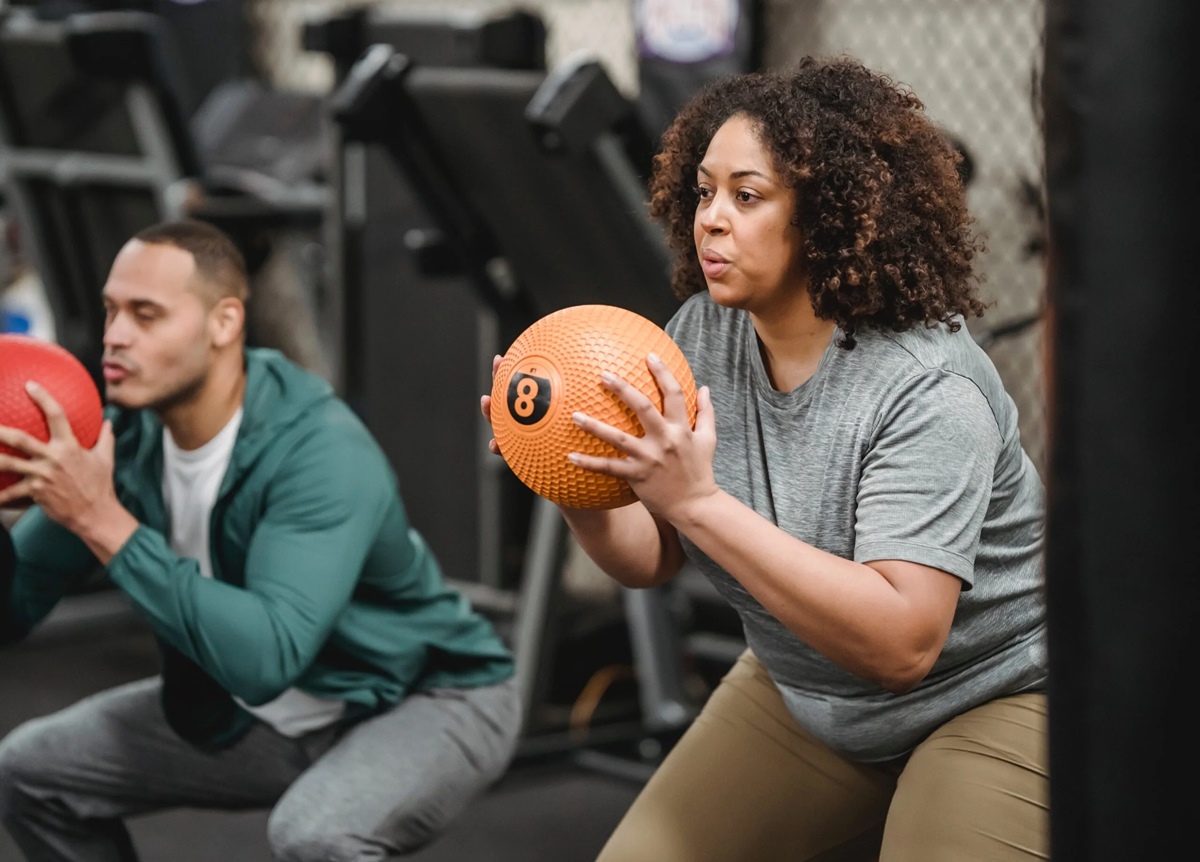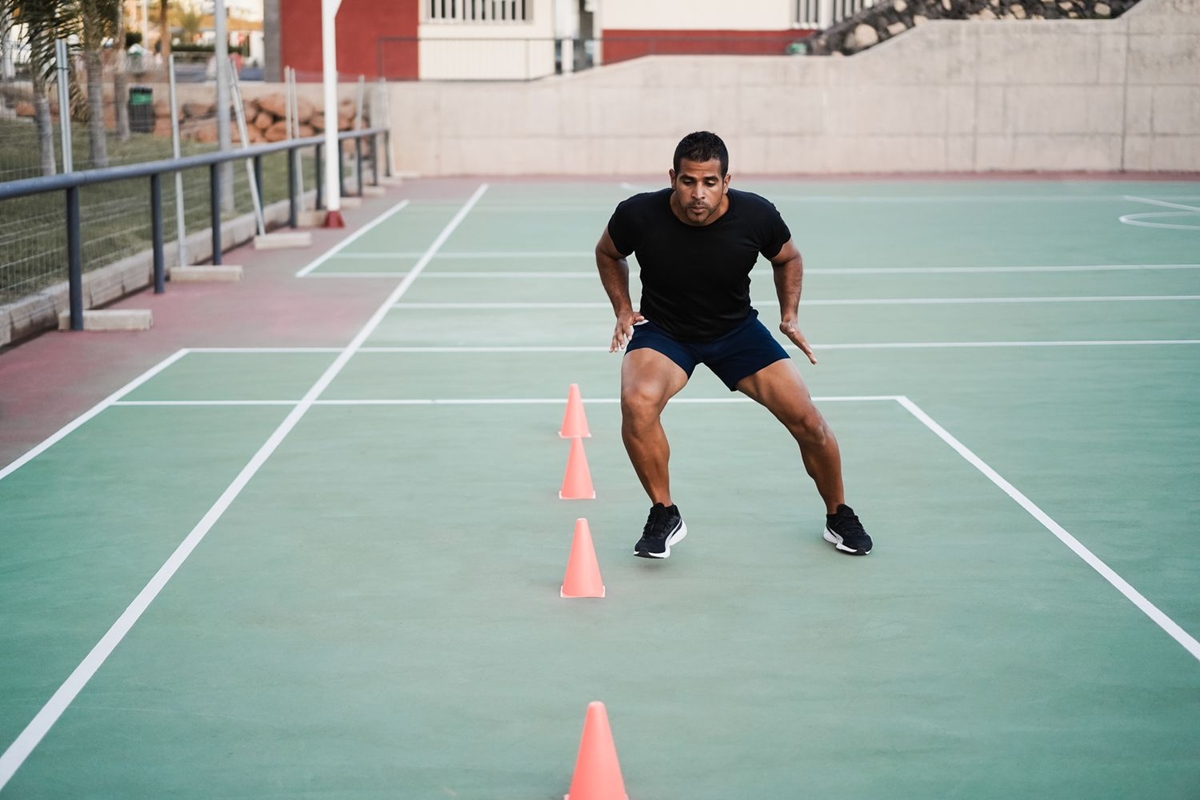Home>Misc>Featured>Which Of The Following Is An Example Of Interval Training Swimming


Featured
Which Of The Following Is An Example Of Interval Training Swimming
Modified: January 2, 2024
Discover the benefits of interval training swimming and how it can improve your fitness and endurance. Don't miss our featured example of interval training!
Introduction
Interval training is a popular and effective workout technique that involves alternating periods of high-intensity exercise with periods of rest or lower-intensity exercise. It is widely used in various sports and fitness activities, including swimming. Interval training allows swimmers to push their limits, improve their overall performance, and achieve their goals faster.
In this article, we will explore the concept of interval training and its specific application in swimming. We will discuss the benefits of incorporating interval training into your swimming routine, provide examples of interval training sets for swimmers, and offer tips for effectively implementing interval training in your training sessions.
Whether you are a recreational swimmer looking to improve your endurance, a competitive athlete aiming to enhance your performance, or simply someone who wants to add some variety to your swim workouts, interval training can be a valuable tool to help you reach your goals.
So, if you are ready to take your swimming to the next level and optimize your training sessions, let’s dive into the world of interval training and discover how it can transform your swimming abilities.
Overview of Interval Training
Interval training is a training method that involves alternating between periods of high-intensity exercise and periods of rest or lower-intensity exercise. This structured approach allows athletes to maximize their workout efficiency and improve various aspects of their fitness, such as endurance, speed, and power.
The principle behind interval training is to challenge the body to work at a higher intensity than it would during continuous exercise. By pushing the limits and then allowing sufficient recovery time, the body adapts and becomes more efficient at handling the stress placed upon it. This leads to improved cardiovascular fitness, increased muscle strength, and enhanced overall performance.
Interval training can be applied to various types of physical activity, including running, cycling, and swimming. It offers a versatile and dynamic way to train, allowing athletes to tailor their workouts to specific goals and fitness levels. The duration and intensity of each interval can be adjusted based on individual needs, making it suitable for beginners as well as experienced athletes.
There are different types of interval training protocols, including high-intensity interval training (HIIT) and fartlek training. In HIIT, the work intervals are performed at maximum effort, typically for shorter durations, followed by short rest periods. Fartlek training, on the other hand, involves alternating between higher and lower intensities without strict timing guidelines.
Regardless of the specific protocol used, interval training provides numerous benefits. It can improve aerobic and anaerobic capacities, enhance muscular endurance, increase power output, and boost metabolism. Additionally, it can prevent workout plateaus and keep training sessions engaging and challenging.
In the next sections, we will explore the application of interval training specifically in swimming and discuss how it can help swimmers improve their performance and achieve their goals. So, get ready to dive into the world of interval training in swimming and discover the incredible benefits it has to offer.
Benefits of Interval Training
Interval training offers a wide range of benefits that make it a valuable training method for swimmers of all levels. Here are some of the key advantages of incorporating interval training into your swimming routine:
- Improved cardiovascular fitness: Interval training challenges your cardiovascular system by pushing you to work at a higher intensity. This helps to increase your heart rate, improve your oxygen uptake, and enhance your overall cardiovascular endurance.
- Increased speed and power: By incorporating high-intensity intervals into your training, you can improve your sprinting abilities and increase your overall speed in the water. Interval training also helps to develop explosive power, which is crucial for starts, turns, and fast-paced swimming.
- Enhanced endurance: Swimming is an endurance-based sport, and interval training is an excellent way to boost your muscular and cardiovascular endurance. By pushing your body to sustain high-intensity efforts during the work intervals, you gradually improve your ability to swim at a faster pace for longer durations.
- Efficient use of time: Interval training allows you to achieve significant training benefits in a shorter amount of time compared to steady-state workouts. By alternating between high-intensity efforts and rest periods, you can maximize the effectiveness of your training sessions even with limited time.
- Prevention of plateau: Continuous training at the same intensity can lead to a plateau in performance. Interval training, with its varied and challenging nature, helps to prevent plateaus by consistently pushing your limits and continuously challenging your body to adapt and improve.
- Mental toughness: Interval training pushes you out of your comfort zone and requires mental resilience to push through the intense efforts. By training your mind to stay focused and motivated during hard intervals, you develop mental toughness that can benefit you both in and out of the pool.
Overall, interval training for swimming offers a multifaceted approach to improving your performance. By incorporating different intensities, distances, and stroke techniques into your intervals, you can target specific areas of weakness, improve your overall fitness, and ultimately become a faster and more efficient swimmer.
Now that we understand the benefits of interval training, let’s explore how we can apply this training method specifically to swimming and discover some example interval training sets that you can incorporate into your swim workouts.
Interval Training for Swimming
Interval training is particularly effective for swimmers as it closely mimics the nature of competitive swimming. It allows swimmers to practice swimming at different intensities and distances, improving their speed, endurance, and stroke technique.
When designing interval training sets for swimming, several factors should be considered, including the distance of each interval, the intensity of the efforts, the duration of the rest periods, and the stroke technique to focus on. Here are a few key concepts to keep in mind when incorporating interval training into your swim workouts:
- Interval Distance: The distance of each interval will depend on your fitness level and training goals. Shorter intervals (25-50 meters/yards) are often used for sprint-focused workouts, while longer intervals (100-400 meters/yards) are more suitable for endurance training.
- Interval Intensity: The intensity of each interval should reflect the goal of the training session. For speed improvement, intervals should be swum at maximum or near-maximum effort. For endurance training, the intensity should be challenging but sustainable over the duration of the set.
- Rest and Recovery: Rest periods between intervals are crucial for allowing the body to recover and prepare for the next effort. The duration of rest periods will vary depending on the intensity and distance of the intervals. Shorter rest periods are often used for sprint-focused sets, while longer rest periods are used for endurance sets.
- Stroke Technique: Interval training provides an opportunity to focus on specific stroke techniques and improve efficiency in the water. Incorporate drills and specific stroke work into your intervals to refine your stroke mechanics and enhance your overall swimming technique.
Here’s an example of an interval training set for improving speed and endurance:
Set 1:
- 4 x 50m freestyle at maximum effort with 15 seconds rest
- 1 x 100m freestyle at moderate effort with 30 seconds rest
- 4 x 50m freestyle at maximum effort with 15 seconds rest
Set 2:
- 8 x 25m butterfly at near-maximum effort with 20 seconds rest
- 4 x 100m freestyle at moderate effort with 30 seconds rest
Remember to adjust the intervals, intensity, and rest periods according to your fitness level and training goals. Gradually increase the difficulty of the intervals as you progress to continuously challenge your body and prevent plateauing.
Now that you have an understanding of how to structure interval training sets for swimming, let’s explore some tips to make your interval training sessions more effective and enjoyable.
Example of Interval Training Sets for Swimming
Interval training sets for swimming can be customized based on your specific goals and fitness level. By incorporating a mix of distances, intensities, and stroke techniques, you can create a varied and challenging workout routine. Here are a few examples of interval training sets for different objectives:
1. Speed Boost:
- 8 x 50m freestyle at maximum effort with 20 seconds rest
- 4 x 25m butterfly at near-maximum effort with 15 seconds rest
- 6 x 25m freestyle sprints with 10 seconds rest
2. Endurance Building:
- 4 x 200m freestyle at moderate effort with 30 seconds rest
- 8 x 100m pull buoy sets at a steady pace with 20 seconds rest
- 6 x 50m freestyle kick with a kickboard with 15 seconds rest
3. Stroke Improvement:
- 4 x 100m individual medley (IM) with 20 seconds rest
- 6 x 50m backstroke drills with fins with 15 seconds rest
- 8 x 25m breaststroke sprints with 10 seconds rest
Remember to adjust the intervals, intensity, and rest periods based on your current fitness level and progression. Start with a set that challenges you but is still manageable, and gradually increase the difficulty as you improve.
Incorporating interval training sets into your swim workouts can bring variety, excitement, and progress to your training regimen. Keep track of your times, distances, and rest periods to monitor your improvements over time.
Now that you have some interval training set ideas, let”s explore some tips to help you get the most out of your interval training sessions.
Tips for Effective Interval Training
To make your interval training sessions more effective and maximize your results, here are some tips to keep in mind:
- Warm up properly: Before starting your interval training, it’s essential to warm up your muscles and prepare your body for the intense efforts. Incorporate dynamic stretches and a few easy laps to increase your heart rate and loosen up your muscles.
- Focus on form and technique: While working at a higher intensity, it’s easy to let your technique slip. Place emphasis on maintaining proper form throughout your intervals. This will not only improve your performance but also reduce the risk of injuries.
- Listen to your body: Pay attention to how your body is responding to the intervals. If you feel excessively fatigued or experience pain, adjust the intensity or take longer rest periods. It’s important to challenge yourself, but not at the expense of your well-being.
- Progress gradually: As you become more comfortable with your interval training sets, gradually increase the difficulty. This can be done by shortening the rest periods, increasing the distances, or intensifying the efforts. Gradual progression helps prevent injuries and allows for consistent improvement.
- Stay hydrated: Proper hydration is crucial during any workout, including interval training. Drink water before, during, and after your sessions to maintain optimal performance and prevent dehydration.
- Include recovery periods: In addition to rest periods within your intervals, it’s important to incorporate recovery days in your training schedule. These days allow your body to recover and adapt to the stress placed upon it, minimizing the risk of overtraining.
- Track your progress: Keep a training journal or use a fitness tracking app to monitor your intervals’ duration, distances, and times. This will help you gauge your progress over time and stay motivated to reach new goals.
By implementing these tips, you can maximize the effectiveness of your interval training sessions and achieve better results in your swimming performance.
With interval training, consistency is key. Incorporate interval sessions into your training routine regularly to reap the long-term benefits of improved speed, endurance, and overall fitness.
Now that you’re equipped with these tips, you’re ready to dive into your interval training sessions and take your swimming to new heights.
Conclusion
Interval training is an essential component of any swimmer’s training regimen. By incorporating this structured and dynamic training technique, swimmers can improve their speed, endurance, and overall performance in the water.
We explored the concept of interval training and its specific application in swimming. We discussed the numerous benefits it offers, such as improved cardiovascular fitness, increased speed and power, enhanced endurance, efficient use of time, prevention of plateau, and mental toughness.
Furthermore, we provided examples of interval training sets for different training goals, including speed boost, endurance building, and stroke improvement. It’s essential to tailor these sets to your individual fitness level and goals, gradually increasing the intensity and difficulty over time.
To ensure effective interval training, we shared valuable tips such as warming up properly, focusing on form and technique, listening to your body, progressing gradually, staying hydrated, including recovery periods, and tracking your progress.
Remember, interval training is all about pushing your limits, challenging yourself, and continuously striving for improvement. By incorporating interval training into your swim workouts consistently, you can take your swimming abilities to new heights and achieve your goals faster.
So, whether you’re a competitive swimmer, a recreational swimmer, or someone looking to enhance their fitness routine, don’t hesitate to dive into the world of interval training in swimming. Experience the excitement, the challenge, and the incredible results it can bring to your swimming journey.
Now, it’s time to hit the pool, embrace the power of interval training, and make waves in your swimming performance. Happy swimming!







